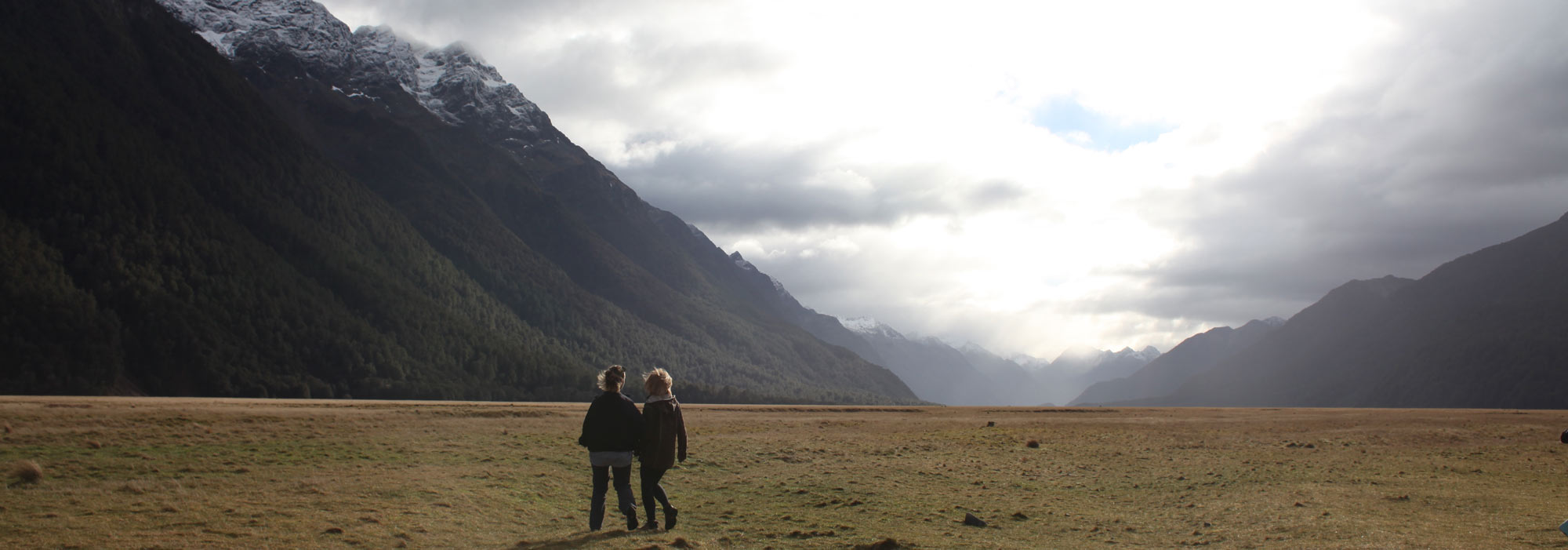

 During the drive from Queenstown to Milford Sound, I was fighting sleep brought on by the rain against the bus window and the bus driver’s monotone voice. When we arrived in the national park, I shot up, and began actively paying attention to the driver. I wasn’t able to get all of what he said written down because my eyes were stuck on the landscape around me, but, with the help of Google for the measurements, I recorded enough about the sound for it to be worth writing about. I hope I can return one sunny day to see Milford at its best, but I’m not sure I could handle its splendor.
During the drive from Queenstown to Milford Sound, I was fighting sleep brought on by the rain against the bus window and the bus driver’s monotone voice. When we arrived in the national park, I shot up, and began actively paying attention to the driver. I wasn’t able to get all of what he said written down because my eyes were stuck on the landscape around me, but, with the help of Google for the measurements, I recorded enough about the sound for it to be worth writing about. I hope I can return one sunny day to see Milford at its best, but I’m not sure I could handle its splendor.
Often referred to as the Eighth Wonder of the World, Milford Sound nestles among towering mountains, steep cliffs, and miles of rainforest. It is the most famous fiord in New Zealand, which was formed when a glacier eroded, carving sheer cliffs into solid bedrock. Though the sound is not daunting as the cliffs, Milford Sound refuses to be ignored. The fiord rests 1,692 meters above sea level—that’s over a mile above the sea—and it stretches almost ten miles long.
Two of Milford Sound’s famous peaks are The Elephant and The Lion, both named for their impressive likeness to the animal. On a sunny day, one can see the tip of the peaks reach through the clouds, but they’re far from sight on a rainy day. In July, I rode a tour bus from Queenstown to Milford Sound on a damp, cloudy day. The ride was longer than expected, so I dozed the first three hours, but as soon as we entered the Fiordland National Park, my eyes grew wide. The mountains and valleys alike are stunning. Even the tunnels are impressive. Homer Tunnel—a tunnel drilled through solid rock—is the only accessible road to Milford Sound. The tunnel, constructed in the 1950’s, took nineteen years to complete. However, the Sound was active before the tunnel. In the 1700s, sealers formed a colony at Milford, planting the country’s first colonial building. Milford’s sealing industry was wildly successful before the sealers wiped out all of the seals in the area. A half century later, whalers followed suit, before the whales, too, had vanished from the area.
It is said that the Maoris discovered Milford Sound one thousand years ago. Maori legend claims that a demi-god, Tuterakiwhanoa, sculpted the fiord, but research disputes the legend. The glacial erosion said to have chiseled the mountains would have occurred during the last ice age; however, many Maoris hang onto the legend, calling Milford Sound Piopiotahi in reference to an extinct bird that used to be found at Milford. Whether the sound is the creation of Tuterakiwhanoa or a colossal glacier, it stands tall and stretches far, a breathtaking sight worth every visitor’s admiration.
For more information about the Fiji/New Zealand Study Abroad program, come by the Office of Global Education located in Spidle Hall room 232, or e-mail Kate Thornton.